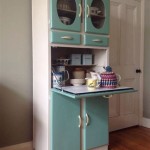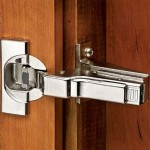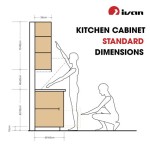Essential Aspects of Kitchen Cabinet Diagrams
Kitchen cabinet diagrams are vital in the design and installation process of any kitchen. They provide a detailed representation of the proposed cabinet layout, including the dimensions, materials, and finishes. With accurate diagrams, homeowners and contractors can ensure a seamless and visually appealing kitchen renovation.
Components of a Kitchen Cabinet Diagram
Essential components of a kitchen cabinet diagram include:
- Layout: Shows the overall arrangement of cabinets, including base cabinets, wall cabinets, and any islands or peninsulas.
- Dimensions: Precise measurements for each cabinet, including height, width, and depth.
- Materials: Specifications for the cabinet materials, such as wood, laminate, or metal.
- Finishes: Indicates the color, texture, and style of the cabinet finishes, including paint, stain, or hardware.
- Elevation: A side view of the cabinets, showing the height and design details from the front.
Benefits of Kitchen Cabinet Diagrams
Kitchen cabinet diagrams offer numerous advantages:
- Accurate Planning: Diagrams ensure precise measurements and placement of cabinets, minimizing errors and preventing costly re-work.
- Visual Representation: They provide a clear understanding of the kitchen layout before construction begins, allowing for design adjustments as needed.
- Material Selection: Diagrams help determine the amount and type of materials required, ensuring accurate material estimates.
- Space Optimization: Diagrams help optimize cabinet placement to maximize storage and enhance kitchen functionality.
- Communication: Diagrams serve as a valuable communication tool between homeowners, contractors, and designers, ensuring everyone is on the same page.
How to Read a Kitchen Cabinet Diagram
Understanding kitchen cabinet diagrams requires some familiarity with basic symbols and conventions:
- Cabinet Type Symbols: Base cabinets are represented by a square, wall cabinets by a rectangle, and peninsulas by a half circle.
- Measurements: Dimensions are usually listed in inches or feet, using abbreviations such as "W" for width, "H" for height, and "D" for depth.
- Materials: Wood is typically indicated by a grain pattern, laminate by a solid color, and metal by a metallic texture.
- Finishes: Paint colors are often represented by swatches, while hardware is shown as small circles or squares.
- Elevation Lines: Horizontal lines indicate the bottom and top of the cabinets, while vertical lines represent the sides.
Conclusion
Kitchen cabinet diagrams play a crucial role in ensuring a successful kitchen renovation. Accurate diagrams provide a visual representation of the planned layout, materials, and finishes, allowing for precise planning, optimization, and clear communication among all parties involved.

Kitchen Base Cabinets 101 Ana White

Wooden Building Kitchen Cabinets Plans Diy Blueprints Cabinet Design

Cabinets Drawing1 Kitchen Cabinet Plans Dimensions Building

Kitchen Cabinet Plans Woodwork City Free Woodworking

Kitchen Cabinets The Engineer S Way Finewoodworking

How To Design A Traditional Kitchen With Diy Cabinets

Woodsmith Custom Kitchen Cabinets Plans Wilker Do S

Kitchen Cabinet Plans Amazing Your Residence Idea Base Cabine Building Cabinets Diy Remodel

Kitchen Cabinets 101 Cabinet Shapes Styles Cabinetcorp

How To Build Base Cabinets The Complete Guide Houseful Of Handmade
Related Posts








